观星指南(2023年5月)
5月份的天空会发生什么?月球与行星的合影,我们到达了“金星的顶峰”,以及南半球的天空有什么不同呢?
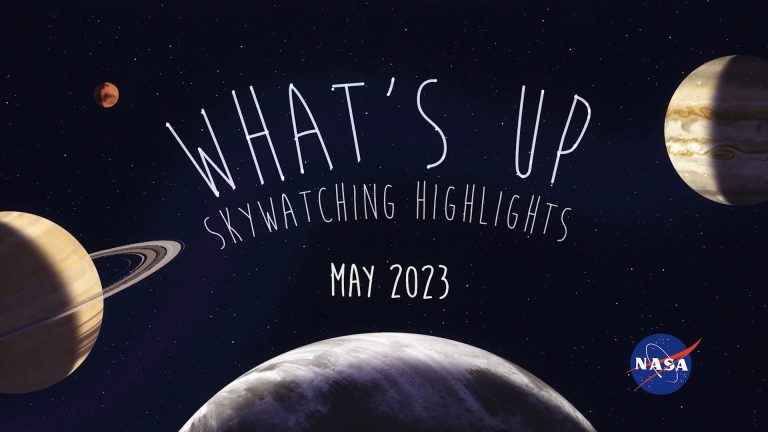
5月份的天空会发生什么?月球与行星的合影,我们到达了“金星的顶峰”,以及南半球的天空有什么不同呢?
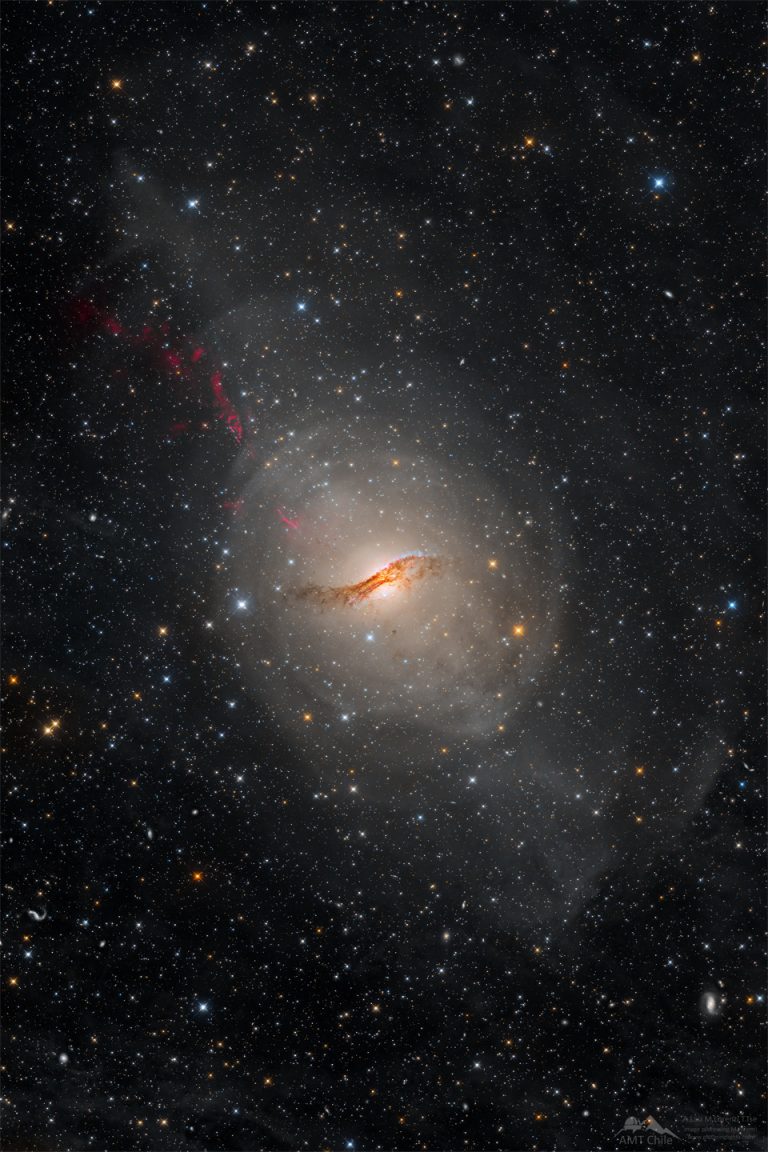
2023年5月3日 Centaurus A: A Peculiar Island of Stars Image Credit & Copyright: Marco Lorenzi, Angus Lau & Tommy Tse; Text: Natalia Lewandowska (SUNY Oswego) Explanation: Galaxies are fascinating. In galaxies, gravity alone holds together massive collections of stars, dust, interstellar gas, stellar remnants and dark matter. Pictured is NGC 5128, better known as Centaurus A. Cen A is the fifth brightest galaxy on the sky and is located at a distance of about 12 million light years from Earth. The warped shape of Cen A is the result of a merger between an elliptical and a spiral galaxy. Its active galactic nucleus harbors a supermassive black hole that is about 55 million times more massive than our Sun. This central black hole ejects a fast…
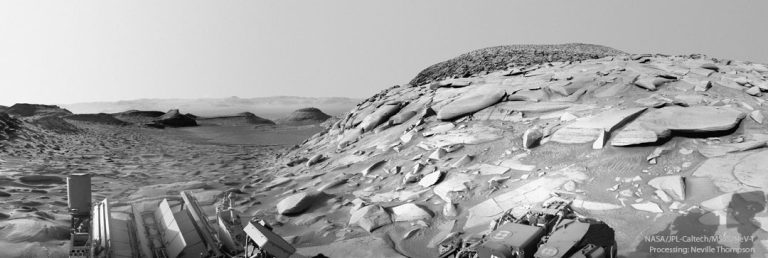
2023年5月2日 Flat Rock Hills on Mars Image Credit & Copyright: NASA, JPL-Caltech, MSSS; Processing: Neville Thompson Explanation: Why are there so many flat rocks on Mars? Some views of plains and hills on Mars show many rocks that are unusually flat when compared to rocks on Earth. One reason for this is a process that is common to both Mars and Earth: erosion. The carbon-dioxide wind on Mars can act like sandpaper when it blows around gritty Martian sand. This sand can create differential erosion, smoothing over some rocks, while wearing down the tops of other long-exposed stones. The featured image capturing several hills covered with flat-topped rocks was taken last month by NASA’s Curiosity Rover on Mars. This robotic rover has now been rolling…
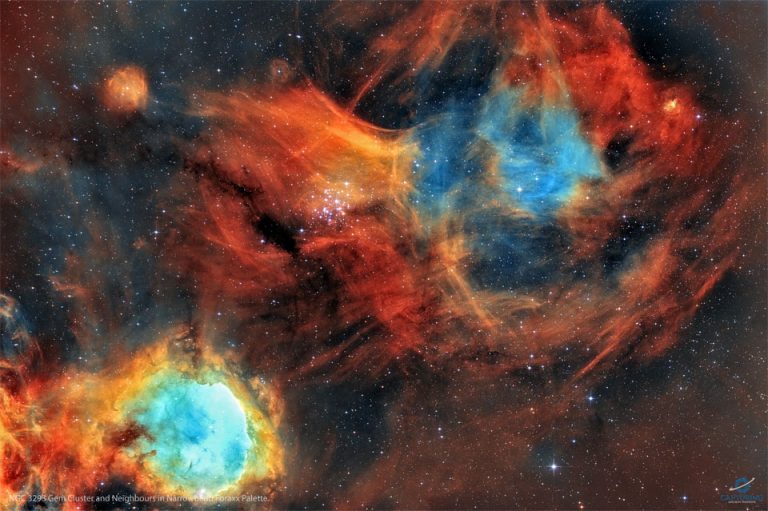
2023年5月1日 Carina Nebula North Image Credit & Copyright: Carlos Taylor Explanation: The Great Carina Nebula is home to strange stars and iconic nebulas. Named for its home constellation, the huge star-forming region is larger and brighter than the Great Orion Nebula but less well known because it is so far south — and because so much of humanity lives so far north. The featured image shows in great detail the northernmost part of the Carina Nebula. On the bottom left is the Gabriela Mistral Nebula consisting of an emission nebula of glowing gas (IC 2599) surrounding the small open cluster of stars (NGC 3324). Above the image center is the larger star cluster NGC 3293, while to its right is the emission nebula Loden 153….
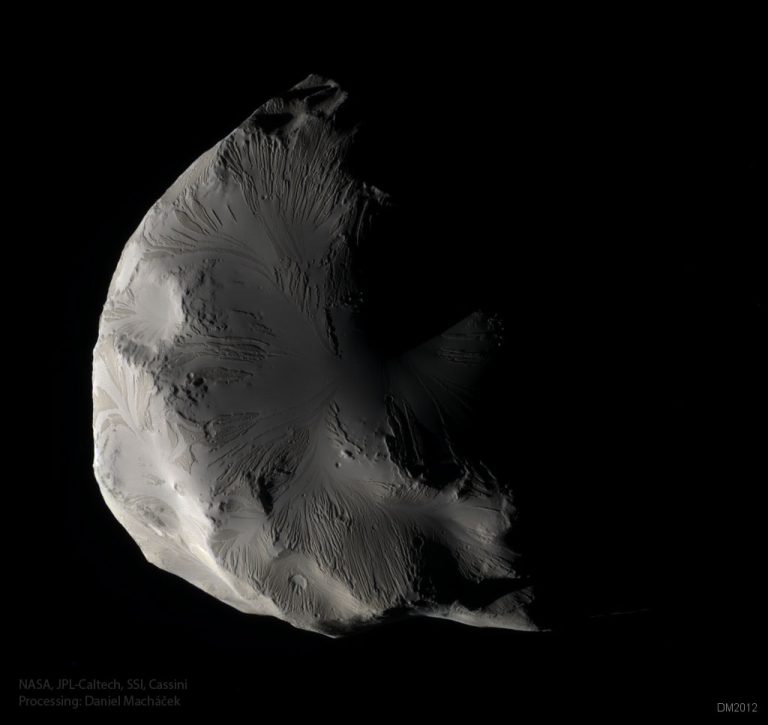
2023年4月30日 Saturn’s Moon Helene in Color Image Credit: NASA, JPL-Caltech, SSI; Processing: Daniel Macháček Explanation: Although its colors may be subtle, Saturn’s moon Helene is an enigma in any light. The moon was imaged in unprecedented detail in 2012 as the robotic Cassini spacecraft orbiting Saturn swooped to within a single Earth diameter of the diminutive moon. Although conventional craters and hills appear, the above image also shows terrain that appears unusually smooth and streaked. Planetary astronomers are inspecting these detailed images of Helene to glean clues about the origin and evolution of the 30-km across floating iceberg. Helene is also unusual because it circles Saturn just ahead of the large moon Dione, making it one of only four known Saturnian moons to occupy a…
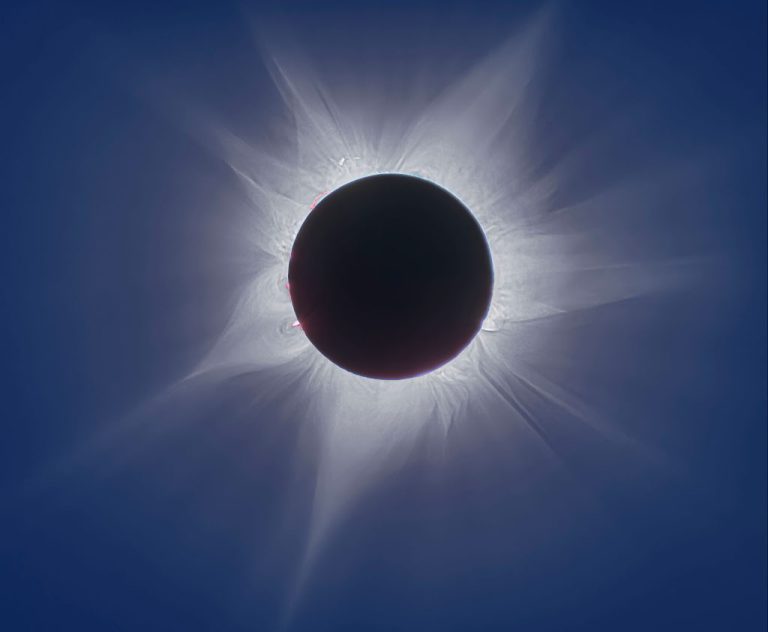
2023年4月29日 Solar Eclipse from a Ship Image Credit: Fred Espenak Explanation: Along a narrow path that mostly avoided landfall, the shadow of the New Moon raced across planet Earth’s southern hemisphere on April 20 to create a rare annular-total or hybrid solar eclipse. From the Indian Ocean off the coast of western Australia, ship-borne eclipse chasers were able to witness 62 seconds of totality though while anchored near the centerline of the total eclipse track. This ship-borne image of the eclipse captures the active Sun’s magnificent outer atmosphere or solar corona streaming into space. A composite of 11 exposures ranging from 1/2000 to 1/2 second, it records an extended range of brightness to follow details of the corona not quite visible to the eye during…
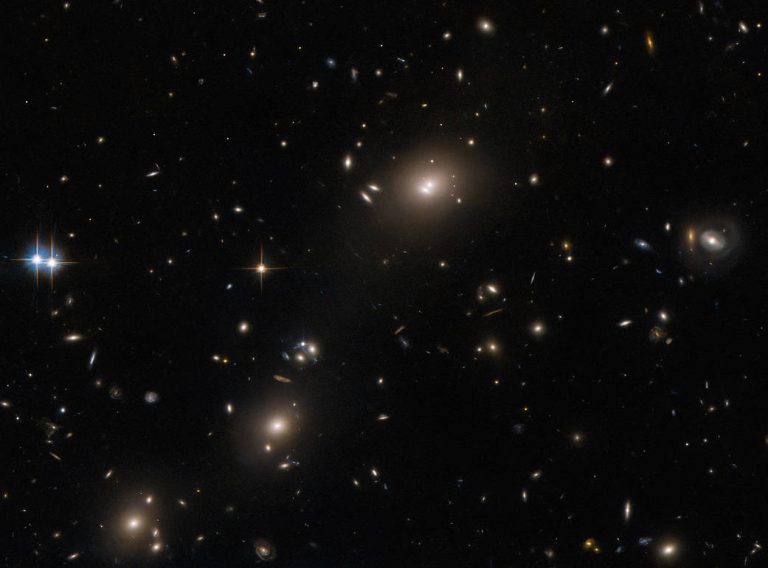
A menagerie of interesting astronomical finds are visible in this image from the NASA/ESA Hubble Space Telescope. In addition to several large elliptical galaxies, a ring-shaped galaxy is lurking on the right of the image. A pair of bright stars are also visible at the left of the image, notable for their colorful crisscrossing diffraction spikes. This collection of astronomical curiosities is the galaxy cluster ACO S520, located in the constellation Pictor and captured by Hubble’s Advanced Camera for Surveys. ACO S520 represents one of a series of Hubble observations searching for massive, luminous galaxy clusters that had not been captured by earlier surveys. Astronomers took advantage of occasional gaps in Hubble’s busy schedule to capture images of these barely explored galaxy clusters, revealing a…
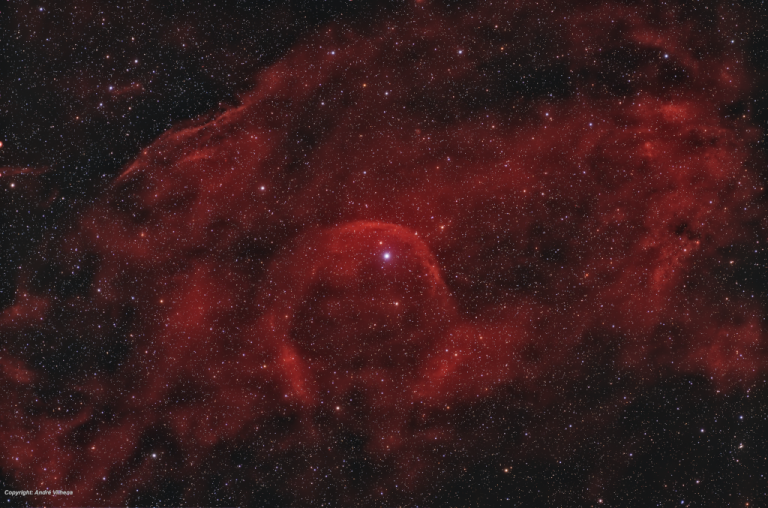
2023年4月28日 Runaway Star Alpha Camelopardalis Image Credit: André Vilhena Explanation: Like a ship plowing through cosmic seas, runaway star Alpha Camelopardalis has produced this graceful arcing bow wave or bow shock. The massive supergiant star moves at over 60 kilometers per second through space, compressing the interstellar material in its path. At the center of this nearly 6 degree wide view, Alpha Cam is about 25-30 times as massive as the Sun, 5 times hotter (30,000 kelvins), and over 500,000 times brighter. About 4,000 light-years away in the long-necked constellation Camelopardalis, the star also produces a strong stellar wind. Alpha Cam’s bow shock stands off about 10 light-years from the star itself. What set this star in motion? Astronomers have long thought that Alpha Cam…
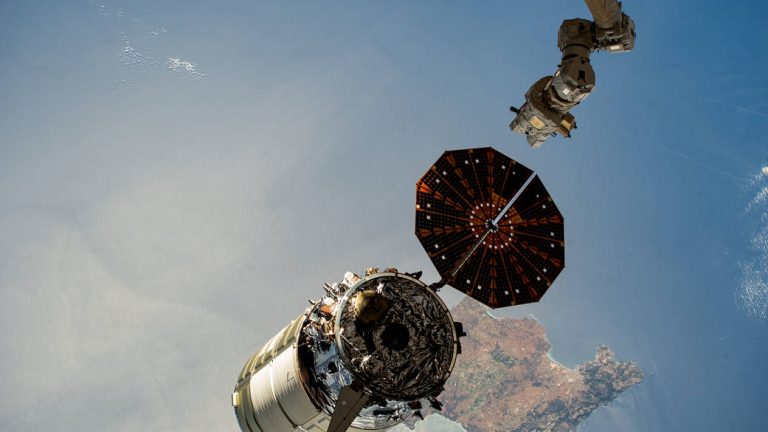
图为国际空间站在西班牙马略卡岛附近的地中海上空262英里处绕轨道飞行时,诺斯罗普·格鲁曼公司的天鹅座太空货运飞船从加拿大手臂2号机械臂上释放后的瞬间。
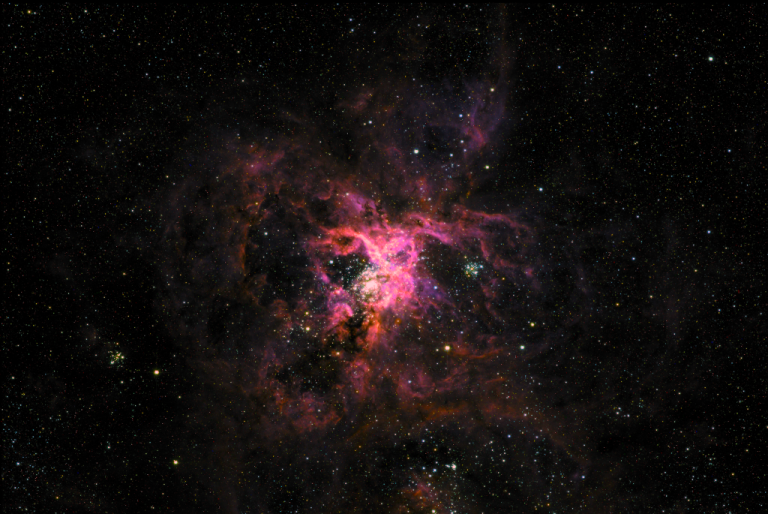
2023年4月27日 The Tarantula Nebula from SuperBIT Image Credit: SuperBIT, NASA Explanation: The Tarantula Nebula, also known as 30 Doradus, is more than a thousand light-years in diameter, a giant star forming region within nearby satellite galaxy the Large Magellanic Cloud. About 160 thousand light-years away, it’s the largest, most violent star forming region known in the whole Local Group of galaxies. The cosmic arachnid is near the center of this spectacular image taken during the flight of SuperBIT (Super Pressure Balloon Imaging Telescope), NASA’s balloon-borne 0.5 meter telescope now floating near the edge of space. Within the well-studied Tarantula (NGC 2070), intense radiation, stellar winds and supernova shocks from the central young cluster of massive stars, cataloged as R136, energize the nebular glow and shape…